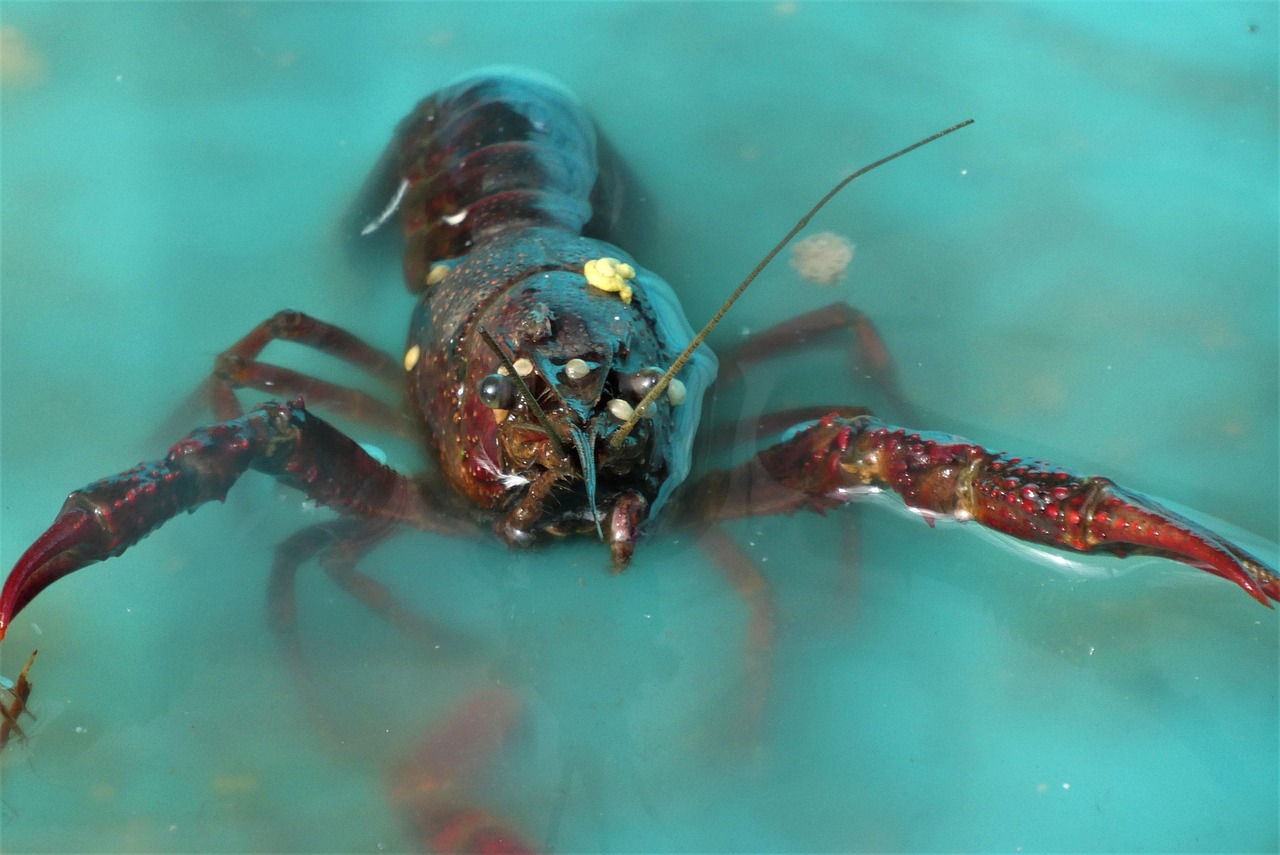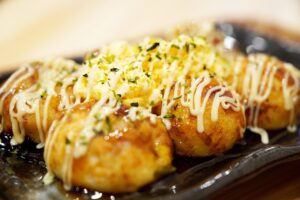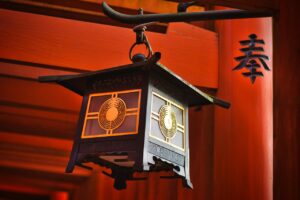Welcome to Osaka, a city where the neon glow of Dotonbori often gets all the attention, its giant mechanical crabs and glowing Glico man promising a feast for the senses. And they deliver, in their own dazzling way. But for those of us who crave something deeper, a taste of the city’s true culinary soul, we must wake up before the city does. We must follow the chefs, the restaurateurs, and the generations of Osakans who know where the real magic happens. We head south of the Namba tourist hub to a place that is less of a spectacle and more of a symphony: the Kizu Wholesale Market (Kizu Oroshi Ichiba). This isn’t just a market; it’s the thrumming, beating heart of ‘Tenka no Daidokoro’—The Nation’s Kitchen. For over three centuries, this sprawling, unpretentious complex has been the source, the starting point for nearly every incredible meal served across the city. Forget the curated, tourist-friendly market experiences. Kizu is raw, real, and utterly intoxicating. It’s where you come not just to eat, but to understand the profound connection between this city and its food. It’s where you find a seafood breakfast that will redefine your understanding of freshness, a meal so pure it will echo in your memory long after you’ve left Osaka’s vibrant streets.
While Kizu offers a raw, behind-the-scenes look at Osaka’s seafood supply, for a more accessible and equally delicious experience with fresh seafood, you can explore the vibrant street food scene at Kuromon Ichiba Market.
The Dawn Chorus of Osaka’s Kitchen

To genuinely experience Kizu Market, you need to sync your internal clock with its rhythm, which begins in the dark. The first stirrings start long before dawn, around 3 or 4 AM, as trucks loaded with the ocean’s bounty arrive from ports across Japan. This is the professionals’ time, a period of serious business carried out under the stark glare of industrial lights. For visitors, however, the ideal moment is around 7 AM. By then, the peak frenzy of wholesale trading has eased slightly, yet the air remains charged with energy. The atmosphere is an overwhelming feast for the senses in the most wonderful way. The dominant scent is salty and clean, the smell of the cold sea itself, layered with the metallic sharpness of freshly honed knives and the earthy fragrance of wet concrete. It’s a scent that narrates a tale of hard work and the deep respect for the product that defines Japanese culinary culture.
The sounds form a chaotic but harmonious orchestra. There’s the steady rumble of small turret trucks, or ‘tare-ggare,’ darting through narrow aisles with impressive agility, their drivers expertly maneuvering the crowded paths. You’ll hear the rhythmic slap-slap-slap of fish being scaled, the heavy thud of a cleaver slicing a huge tuna loin, and the high-pitched, melodic calls of vendors advertising their daily specials. Conversations are brief and purposeful, blending business dealings with friendly banter among stall owners who have known each other for decades. This is not a place of quiet reflection; it is a vibrant, living entity, fueled by caffeine, camaraderie, and a shared passion for exceptional food. What truly distinguishes Kizu from more polished tourist spots is this tangible sense of purpose. Everyone here has a role, a reason for being at this unfathomable hour. They are here to work, to secure the absolute best for their customers. As a visitor, you become a privileged witness to this daily ritual, a humbling and captivating experience.
Navigating the Labyrinth of Flavor
At first glance, Kizu Market can appear to be an intimidating maze of stalls and narrow passageways. However, with a bit of orientation, the market’s logic quickly becomes clear. It is generally divided into distinct sections, though the boundaries can sometimes be indistinct. The highlight, naturally, is the seafood area. Here, an aquatic encyclopedia is displayed on beds of crushed ice. Shimmering silver-skinned horse mackerel (aji), deep crimson slices of lean tuna (akami), and rich, fatty tuna belly (toro) that resembles marbled wagyu beef. You’ll find trays of live shrimp twitching their legs, and baskets filled with oddly shaped shellfish, each offering a unique taste of the Japanese sea. Spot the enormous octopuses with their tentacles neatly coiled, and the daunting yet delicious conger eels (anago). In winter, the stalls overflow with boxes of snow crab (zuwaigani) and the famed, dangerously poisonous but expertly prepared fugu, or pufferfish, a true delicacy.
But Kizu is far more than just seafood. Venture further, and you’ll find the produce section bursting with color and variety. Piles of perfectly formed vegetables, from knobby ginger roots and pristine white daikon radishes to bunches of vibrant green onions. The fruit stalls are a testament to Japan’s passion for flawless produce: boxes of giant, immaculate strawberries in spring, or fragrant, white-fleshed peaches in summer. Then there are the specialists. Stalls devoted entirely to pickles (tsukemono), offering a stunning range from salty plums (umeboshi) to crisp pickled cabbage. Butchers selling top-quality domestic beef, shops with dried goods like kombu seaweed and katsuobushi (dried bonito flakes)—the fundamental ingredients of Japanese cooking—and even a stall devoted solely to perfectly made, slightly sweet rolled omelets (tamagoyaki). Wandering through Kizu is like seeing the entire pantry of Japanese cuisine exposed. It’s both a culinary lesson and a visual feast before you’ve even tasted a bite.
The Tuna Auction: A Spectacle for the Early Riser
For the truly devoted foodie and early riser, there is one event at Kizu that outshines all others: the tuna auction. Unlike the world-famous auction at Tokyo’s Toyosu Market (formerly Tsukiji), which is highly regulated and tourist-oriented, the Kizu auction is a raw, local affair. It takes place very early, around 5 AM, and is strictly limited to licensed bidders. There is no designated viewing area for tourists here. Nevertheless, by arriving early and showing respect, it’s sometimes possible to catch a glimpse from the sidelines. You’ll see enormous frozen tuna, resembling torpedoes more than fish, lined up neatly on the concrete floor. Potential buyers, serious men in rubber boots, examine the fish with intense scrutiny. They inspect the tail cross-section, assessing color, fat content, and texture. Then the auctioneer, seated on a small stool, begins his fast, cryptic chant. Bidders communicate through subtle, secretive hand signals. A finger flick, a slight nod—these gestures finalize deals worth thousands, sometimes tens of thousands, of dollars. The atmosphere is electric. Within minutes, the giant fish are sold, tagged, then swiftly carted away for processing. Witnessing this tradition is a powerful reminder that behind every perfect slice of sashimi lies a complex web of expertise, commerce, and time-honored tradition.
The Ultimate Seafood Breakfast: Beyond the Guidebook Kaisen-don
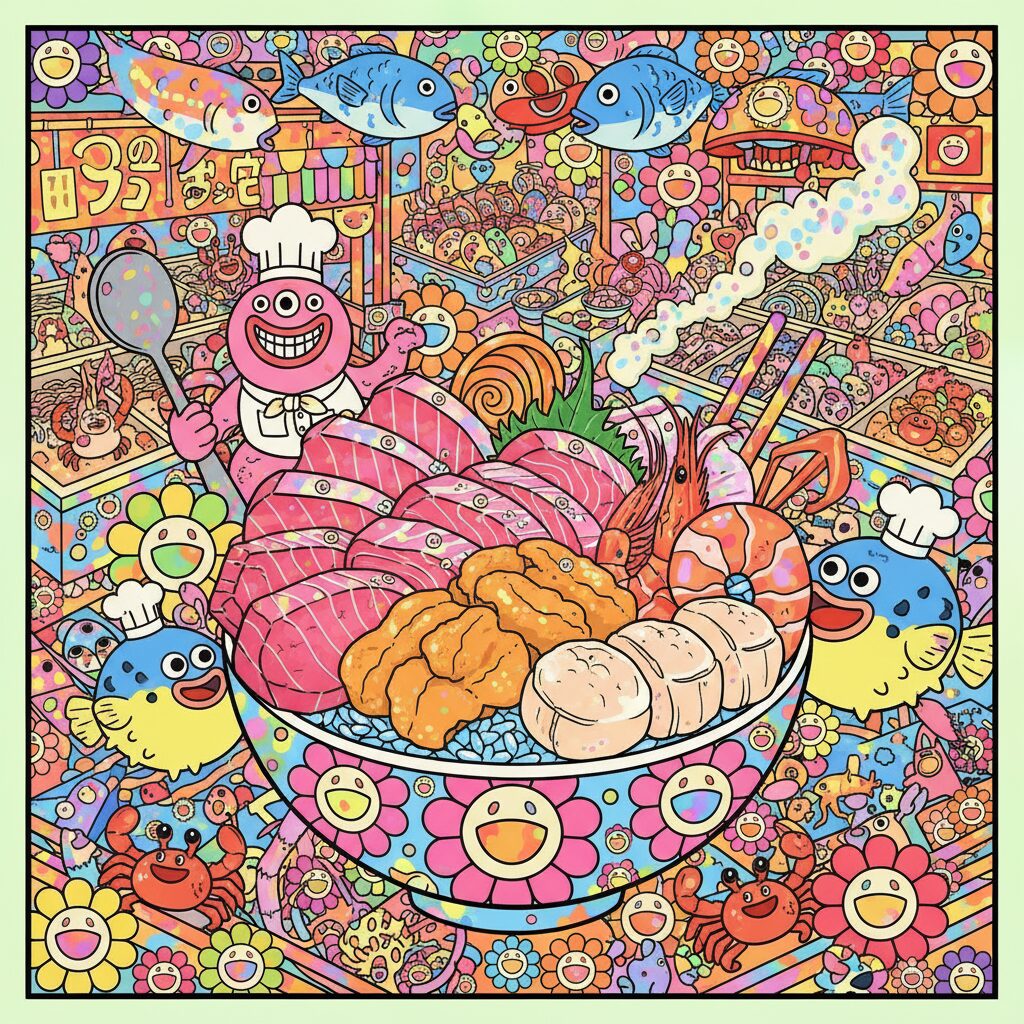
After soaking in the market’s lively atmosphere, it’s time for the main event: breakfast. This is the reward for your early start. The small eateries nestled within and around the market are legendary among Osaka’s chefs—and for good reason. They have access to the freshest ingredients imaginable, just steps away from their kitchen doors. While several places serve a good kaisen-don (a bowl of rice topped with assorted sashimi), the true Kizu experience lies in seeking out the spots where market workers themselves dine and ordering what they have. These meals are beautifully simple, allowing the quality of the ingredients to speak for itself.
Maruyoshi Shokudo: The Uncrowned King of Market Dining
If any place truly captures the spirit of Kizu Market dining, it’s Maruyoshi Shokudo. From the outside, it appears utterly unremarkable—a plain sliding door, a faded blue noren curtain, and a few plastic food models in a display case. Inside, it’s a tiny, no-frills space with a simple counter and a handful of small tables. But the food coming from its modest kitchen is nothing short of sublime. This is a spot revered by the market’s toughest critics: the vendors and chefs themselves. While the sashimi set is fantastic, the real treasures on the menu are the cooked dishes. Consider ordering the ‘Nitsuke Teishoku,’ a set meal featuring a whole fish simmered in a broth of soy sauce, mirin, sake, and ginger. The fish of the day might be a fatty rockfish (mebaru) or a delicate flounder (karei). The simmering renders the flesh incredibly tender and moist, while the sweet and savory sauce soaks into the perfectly cooked white rice served alongside. It’s pure, unadulterated Japanese comfort food. Another highlight is the ‘Yakizakana Teishoku,’ the grilled fish set. A simple fillet of Spanish mackerel (sawara) or salmon (sake) is salted and grilled over high heat until the skin crisps blisteringly and the inside remains flaky and juicy. Accompanied by a bowl of profound miso soup, a small dish of pickles, and pristine rice, it’s a meal of stunning simplicity and flawless execution. Dining at Maruyoshi feels like discovering a wonderful secret.
Kizu no Uoichi Shokudo: A Symphony of Sashimi
For those craving an epic bowl of raw seafood, Kizu no Uoichi Shokudo is a must-visit. This spot is somewhat more accustomed to visitors but remains deeply committed to quality. Their signature dish, the ‘Uoichi Kaisen-don,’ is a bowl of vinegared rice so generously topped with seafood that you can barely see the rice beneath. This is no random assortment; it’s a carefully curated selection of the day’s best catch. Picture a base of perfectly seasoned rice, topped with a slice of rich, fatty yellowtail (buri), a piece of delicate sea bream (tai), and a dollop of creamy, decadent sea urchin (uni) that tastes like a sweet ocean breeze. Add to that sweet shrimp (amaebi), tender squid (ika) slices, and a generous spoonful of glistening salmon roe (ikura) that bursts with salty flavor in your mouth. Each ingredient shines on its own, yet together they create a harmonious symphony of textures and flavors. A pro tip: while the standard kaisen-don is excellent, check the specials board or ask about an ‘omakase’ (chef’s choice) option. This ensures you receive the very best catch of the day, including seasonal specialties not on the regular menu. It’s a breakfast that will leave you both satisfied and amazed.
More Than Just Raw Fish
Though seafood is the main attraction, don’t overlook the other culinary gems scattered throughout the market. Tiny tempura stalls offer perfectly fried shrimp or sweet potato, battered and cooked fresh before your eyes—it’s the ideal savory snack as you explore. Udon shops serve steaming bowls of thick noodles in savory dashi broth, a comforting choice on a cool morning. And don’t miss the Tamagoyaki stands. Watching chefs craft the rolled omelets is a form of culinary theater. With skillful, practiced movements, they pour thin layers of seasoned egg into a special rectangular pan, rolling it up layer by layer until creating a thick, juicy, slightly sweet omelet. You can buy a whole log to take away or enjoy a single piece on a stick immediately. It’s a simple, delicious, and quintessential Japanese market experience.
A Living History: 300 Years of Feeding Osaka
Walking through Kizu Market is like stepping into history. Its origins date back to the early 18th century, during Japan’s Edo Period. At that time, Osaka was gaining its reputation as ‘Tenka no Daidokoro’—The Nation’s Kitchen. It served as the central hub for the country’s rice trade and a major distribution center for a variety of goods. Markets like Kizu emerged to serve the city’s growing population of merchants and samurai. For more than 300 years, the market has persisted, overcoming devastating fires, the chaos of wars, and the relentless advance of modernization. It has witnessed the city’s transformation from a feudal castle town into a vast, futuristic metropolis. Yet, throughout all these changes, its essential purpose has remained the same: to supply the people of Osaka with the best, freshest ingredients available. This rich history is tangible in the market’s atmosphere. It can be seen in the aged faces of third-generation stall owners, the traditional tools still used alongside modern equipment, and the unspoken code that governs the market’s daily operations. Kizu’s location is also important. Positioned just steps from the lively entertainment district of Namba, it remains a vital, functioning connection to the city’s past, a reminder of the origins of Osaka’s vibrant food culture that now draws visitors worldwide. It is the cornerstone upon which the city’s culinary reputation was built.
Tips from a Local-at-Heart: Market Etiquette and Pro-Tips
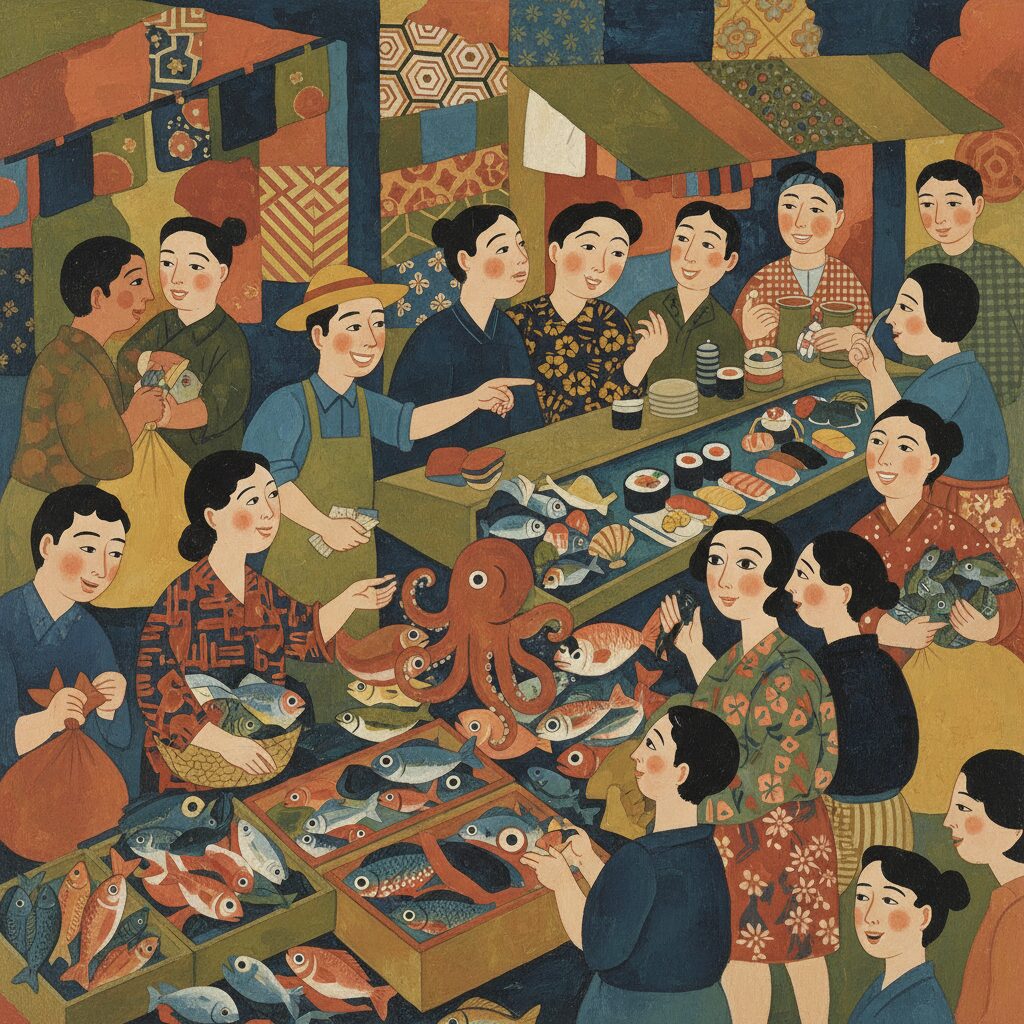
To maximize your visit to Kizu and show respect to those who work there, it’s useful to keep a few key points in mind. Above all, this is a place of business, not a tourist attraction. A bit of awareness goes a long way in ensuring a smooth and pleasant experience for everyone.
Dress for Success (and for a Market)
This isn’t the spot for your best clothes or open-toed shoes. The market floors are regularly hosed down and tend to be wet and slippery. Opt for comfortable, waterproof, closed-toe shoes with good traction. You’ll be on your feet for some time, so stability is important as you navigate the busy aisles. It’s also smart to wear clothes you don’t mind getting splashed, since you’ll be close to people handling fish and moving ice boxes—so a stray drop of water is almost guaranteed.
The Art of Observation
Situational awareness is crucial at Kizu Market. The top rule is to stay clear of the way. The aisles act as thoroughfares for turret trucks and workers pushing heavy carts, who move quickly and expect others to be mindful of their surroundings. Keep to the edges of the aisles and be ready to step aside promptly. When examining the products, remember: look with your eyes, not your hands. The seafood and produce are delicate and carefully arranged. Don’t touch anything unless you clearly intend to purchase it, and even then, it’s courteous to ask the vendor first. Regarding photography, be discreet and sensitive. This is a workplace, and many people prefer not to be photographed without permission. General shots of the market are usually acceptable, but if you want close-ups of specific individuals or stalls, always ask first with a polite gesture and a smile. A simple “Sumimasen, shashin ii desu ka?” (“Excuse me, is it okay to take a photo?”) will be appreciated.
Cash is King
Cash remains king in Japan, especially in traditional markets. While some larger restaurants or shops may accept credit cards, most small stalls and eateries are cash-only. Be sure to visit an ATM before arriving and carry enough yen, especially in smaller bills and coins. It’s much easier to have change on hand than to try breaking a 10,000 yen note for a 200 yen snack.
Seasonal Treasures
One of the delights of Japanese cuisine is its strong connection to the seasons, and Kizu Market embodies this philosophy. Visiting in different seasons will provide a unique experience and new flavors to explore. Winter (December to February) highlights rich, fatty fish like yellowtail (buri) and is prime season for crab and fugu. Spring (March to May) brings delicate tastes such as sea bream (tai), firefly squid (hotaruika), and the first bonito of the year (hatsu-gatsuo). Summer (June to August) features lighter fish like horse mackerel (aji) and the prized conger eel (anago). Autumn (September to November) offers flavorful Pacific saury (sanma) and the return of rich, fatty fish preparing for winter. Asking a vendor, “kyo no osusume wa nan desu ka?” (“What do you recommend today?”) is a great way to discover the season’s best.
Beyond the Market Stalls: Exploring the Neighborhood
One of the greatest advantages of Kizu Market is its prime location. Your amazing breakfast is just the beginning of your journey, serving as the ideal energy boost for a day of exploration. The market is conveniently situated within easy walking distance of several of Osaka’s most renowned districts. After you’ve eaten, a short walk north will bring you to the vibrant heart of Namba, the city’s southern center for shopping, dining, and entertainment. From there, it’s only a few steps to the iconic Dotonbori canal, where you can catch the famous billboards you missed earlier in the day. Heading slightly east from the market leads you to the intriguing Den Den Town, Osaka’s version of Tokyo’s Akihabara. It offers a sensory overload of electronics shops, anime and manga stores, and retro video game arcades—a stark contrast to the market’s organic, historical vibe. This contrast is what makes Osaka so captivating. You can begin your day immersed in a 300-year-old tradition and end it surrounded by modern pop culture. Alternatively, for a quieter post-breakfast experience, you might visit the nearby Namba Yasaka Shrine, known for its massive, striking lion-head stage. It’s a wonderfully surreal and tranquil place to digest your meal and reflect on your morning adventure.
A Taste That Lingers
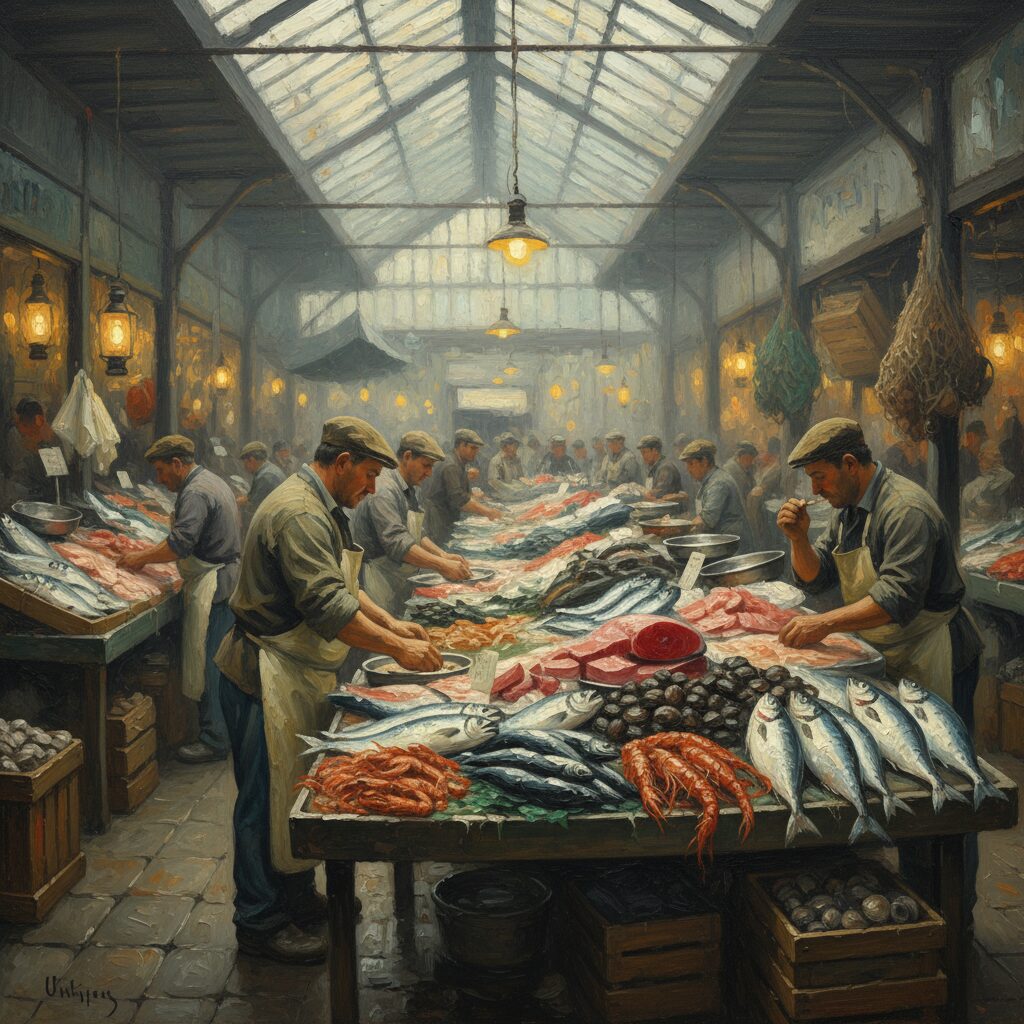
Leaving Kizu Market and stepping back into the now fully awakened city of Osaka feels like crossing between two worlds. You depart from the chorus of vendors and the fresh scent of the sea, returning to the hum of traffic and the steady rhythm of urban life. Yet, the market remains with you—in the taste of the incredibly fresh seafood that lingers on your palate, setting a new standard for all future sashimi. It’s in the memory of the focused, purposeful energy of the people who work there, a community devoted to their craft. A visit to Kizu Wholesale Market is far more than just a meal; it’s a chance to connect with the very essence of Osaka’s identity as The Nation’s Kitchen. It teaches the value of freshness, the beauty of simplicity, and the lasting power of tradition. In a world of fleeting trends and carefully curated experiences, Kizu offers a delicious, profound, and genuinely authentic slice of reality. It’s a taste of the true Osaka, and it’s utterly unforgettable.
